The History of Flamenco, part of the culture of Andalucia Flamenco is regarded as quintessentially Andalucian
By Nick Nutter | Updated 27 Mar 2024 | Andalucia | History |
Login to add to YOUR Favourites or Read Later


Flamenco is regarded as quintessentially Andalucian. Its most visual expression is in the dance; the bailora in her elaborately ruffled dress designed to emphasise the movements of the upper torso hands and fingers, and her protagonist, the bailaor, in his formal black trousers, with his intricate heel and footwork accompanied by the guitarist to one side, or even, if the space is large enough, following the dancers, keeping the rhythm.
The essence of flamenco is song. The cante jondo is characterized by profound emotion and deals with themes of death, anguish, despair, or religious doubt, whilst the cante chico deals with humour and love, the countryside and gaiety. To many people it epitomises the romance of southern Spain. Yet flamenco has its roots long ago and far away, in a different land.
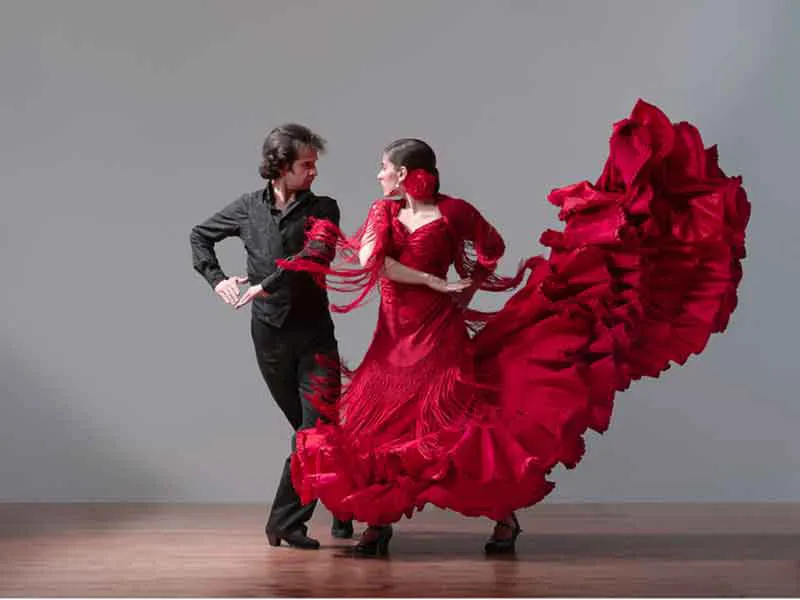
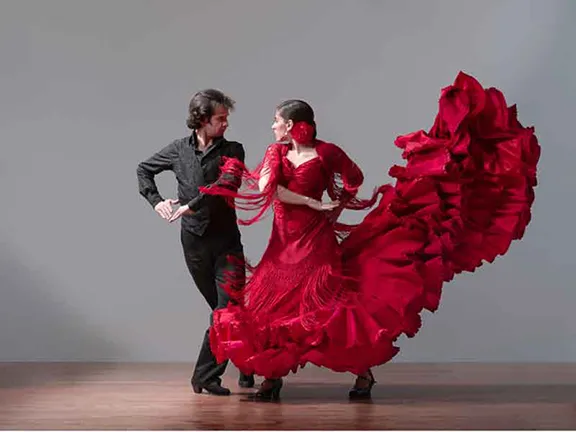
In the 14th century, the Islamic Empire expanded into Rajasthan and the Deccan in India. Many nominally Catholic people, known as the Doma, emigrated from the Punjab region, filtering back through the Islamic territories. They were nomadic groups of between 80 and 150 people.
Unlike other nomads, they had no defined territory and simply travelled in a peaceable manner, hence the nickname ‘travellers’. They eventually made their way into the Iberian Peninsula in the 15th century, by which time they were passing themselves off as pilgrims. The first record of them is in 1425, when Alfonso V, King of Aragon, granted them safe passage through his kingdom. They became known as Roma or Romanies.
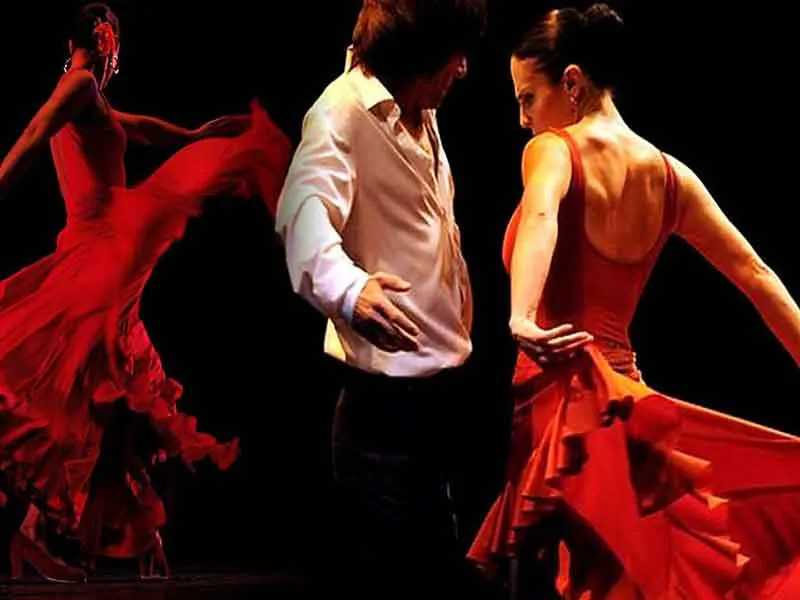
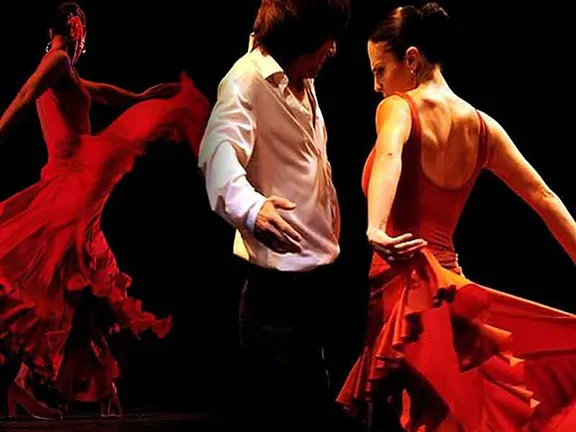
By 1425, the Roma had travelled as far as Santiago de Compostela and were recorded in Barcelona and Zaragoza by 1447 and Jaen in 1462. In 1492 Roma auxiliaries fought alongside the troops of the Catholic monarchs at the siege of Granada.
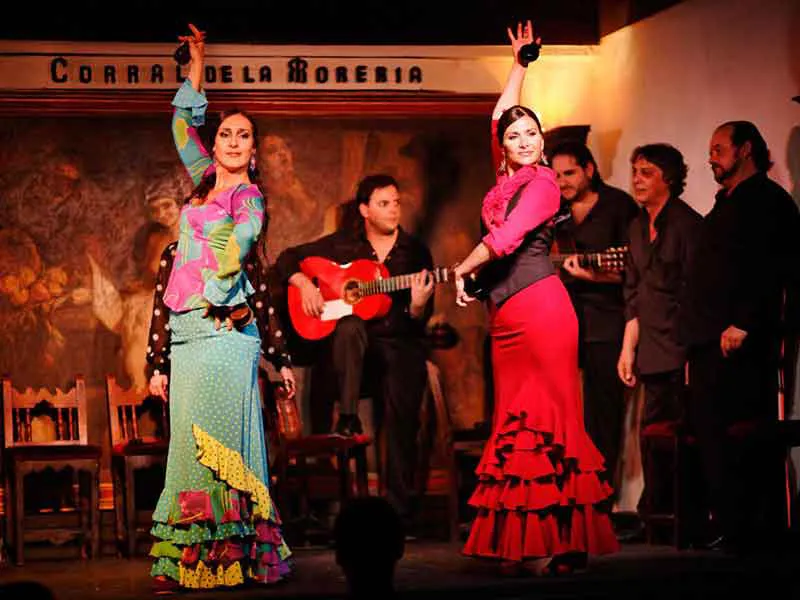
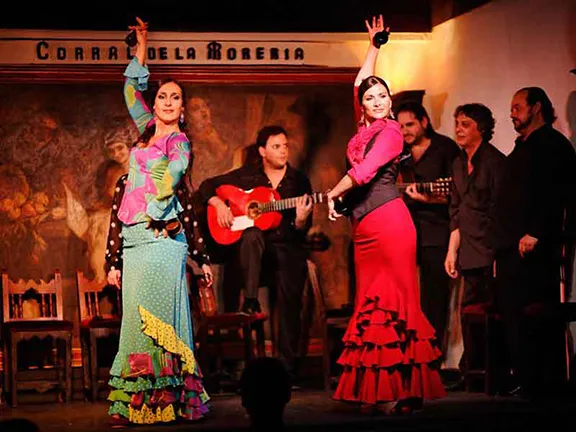
For about 300 years, from the 16th century, Romanies were subject to a number of laws and policies designed to eliminate them from Spain as an identifiable group: Romani settlements were broken up and the residents dispersed; sometimes, Romanies were required to marry non-Roma; they were prohibited from using their language and rituals, and were excluded from public office and from guild membership.
Gradually they again became accepted. In Spain, the Romanies escaped the persecution experienced by their brethren in areas occupied by Germany between 1939 and 1945 and by the 1960s they were considered an asset to Andalucia, part of the romantic tourist promotion strategy exalting the uniqueness of Spanish culture.
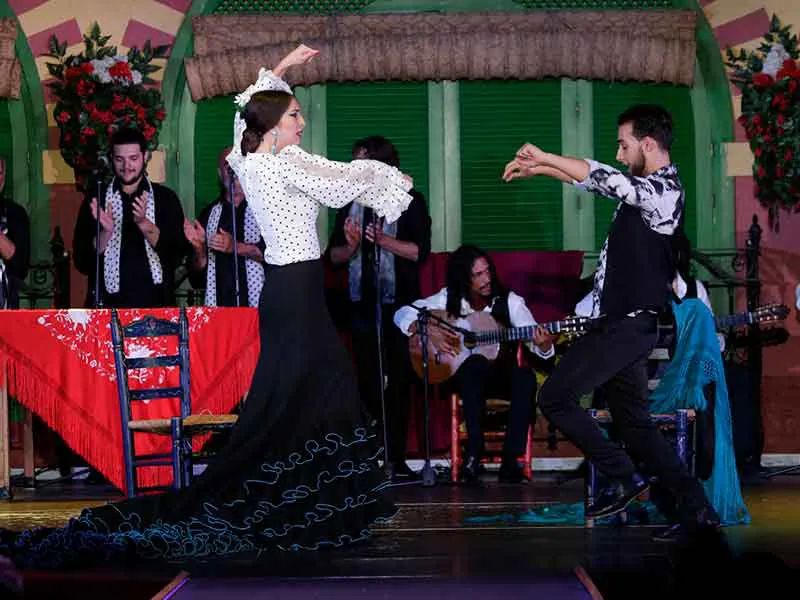
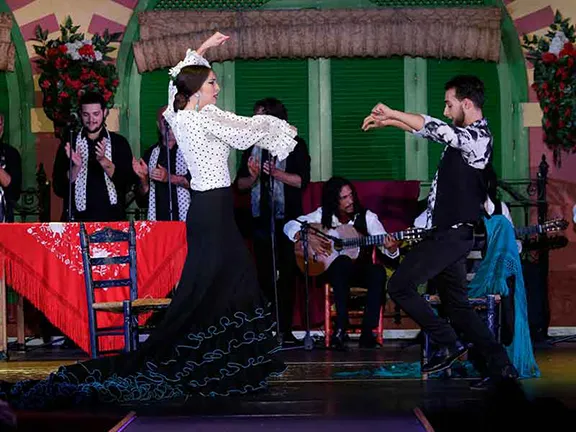
Romanies had their own language, closely related to the Indo-Aryan language spoken by natives of the Punjab. They also had their own sign language that they used for marking places they had been; households that were amenable to providing food or allowing the watering of animals, and to maintain a tenuous contact between groups. Their music was influenced by the other cultures through which they passed, Muslim and native Spanish.
Early performances consisted of a guitarist, and a singer who sang of the legends and stories of an outcast subculture within a predominately white, Christian, Spain.
The dance became the predominant expression of flamenco in the 18th century at the same time as a second musical accompaniment became popular, a palo seco, or dry stick, beaten on the floor to keep the rhythm.
After 15 or 20 minutes of dancing, the dancer can enter a trancelike state, enhanced by rhythmic hand clapping and encouraging interjections (jaleo) from the performers and audience. The gestures of this profound dance (baile grande) closely resemble those of Hindu dances of the Indian subcontinent, revealing the ancient origins of flamenco.
In 1842, Silverio Franconetti transformed what had been a family orientated activity into a commercial enterprise when he established the first café cantante, the Café sin Nombre, in Seville. The singer began to take a secondary role. More establishments opened in the major urban centres, notably Granada, Córdoba and Seville.
Many purists considered the commercial exploitation of flamenco a bastardisation of the authentic indigenous art form. In 1922, Lorca and the composer Manuel de Falla instituted the first flamenco competition, asking for ‘cante primitivo andaluz’, (primitive Andalusian cante) to prevent the further debasement of an authentic folk art.
The only question remaining is where did the word ‘flamenco’ come from? There are a number of theories including one affirming that flamenco was the name of a knife, another that there is a connection with the flamboyant flamingo bird.
Blas Infante, the father of Andalucian nationalism, has the most reasoned argument. In his book Orígenes de lo flamenco y secreto del cante jondo, he alleges that the word flamenco derives from Andalusian Arabic ‘fellah mengu’, supposedly meaning "escapee peasant".
A visit to Andalucia wouldn't be complete without experiencing this art form for yourself.
Here are our recommendations for flamenco shows around Andalucia: